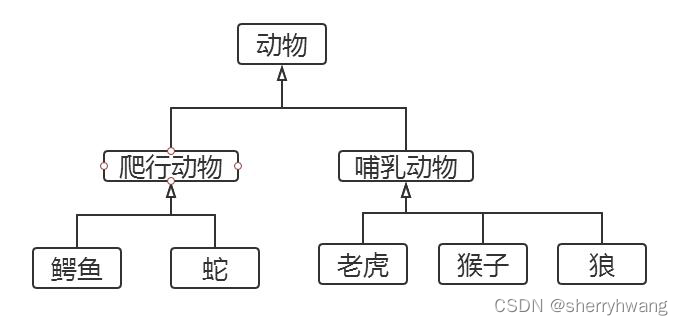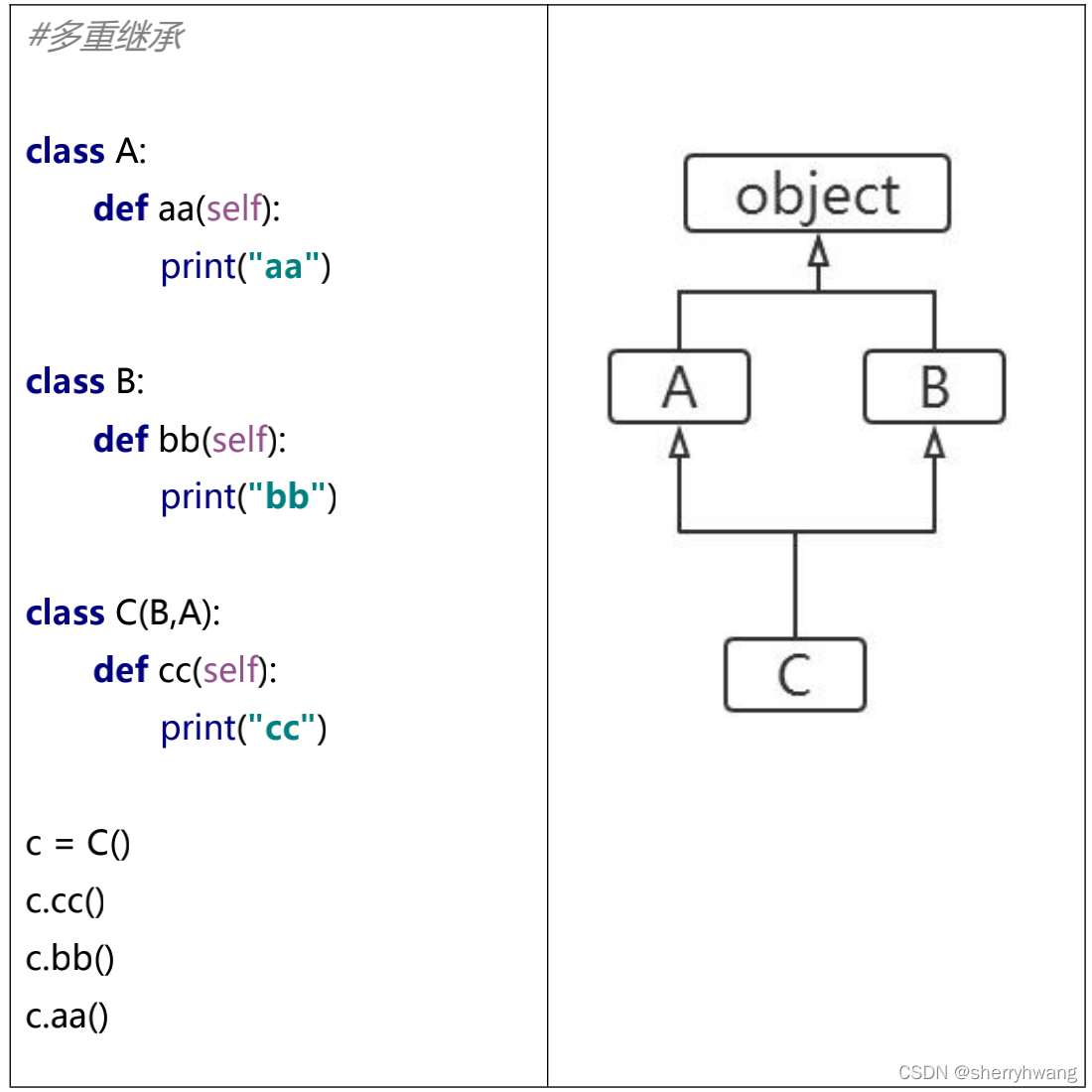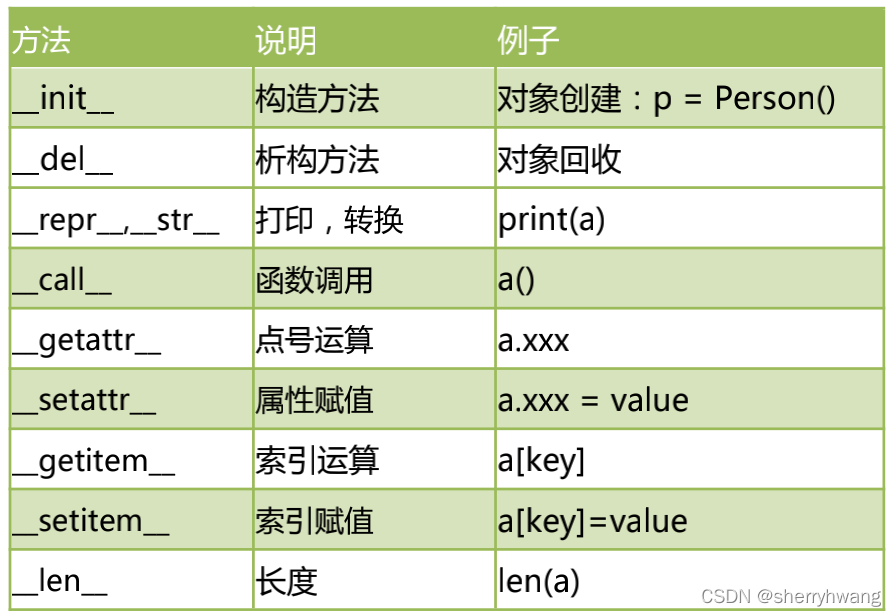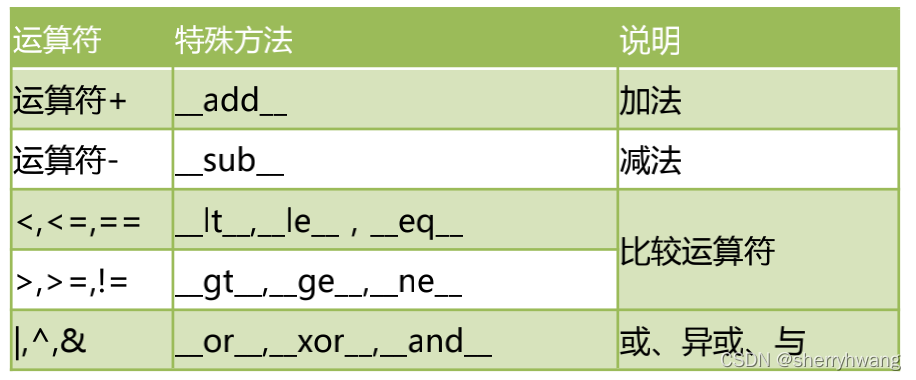жӮЁеҘҪпјҢзҷ»еҪ•еҗҺжүҚиғҪдёӢи®ўеҚ•е“ҰпјҒ
жӮЁеҘҪпјҢзҷ»еҪ•еҗҺжүҚиғҪдёӢи®ўеҚ•е“ҰпјҒ
иҝҷзҜҮж–Үз« з»ҷеӨ§е®¶еҲҶдә«зҡ„жҳҜжңүе…іPythonдёӯйқўеҗ‘еҜ№иұЎзҡ„зү№еҫҒжңүе“Әдәӣзҡ„еҶ…е®№гҖӮе°Ҹзј–и§үеҫ—жҢәе®һз”Ёзҡ„пјҢеӣ жӯӨеҲҶдә«з»ҷеӨ§е®¶еҒҡдёӘеҸӮиҖғпјҢдёҖиө·и·ҹйҡҸе°Ҹзј–иҝҮжқҘзңӢзңӢеҗ§гҖӮ
е°ҒиЈ…пјҲйҡҗи—Ҹпјүпјҡйҡҗи—ҸеҜ№иұЎзҡ„еұһжҖ§е’Ңе®һзҺ°з»ҶиҠӮпјҢзҹҘеҜ№еӨ–жҸҗдҫӣеҝ…иҰҒзҡ„ж–№жі•гҖӮ
继жүҝпјҡи®©еӯҗзұ»жӢҘжңүзҲ¶зұ»зү№еҫҒпјҢжҸҗй«ҳдәҶд»Јз Ғзҡ„йҮҚз”ЁжҖ§гҖӮд»Һи®ҫи®ЎдёҠжҳҜдёҖз§ҚеўһйҮҸиҝӣеҢ–пјҢеҺҹжңүзҲ¶зұ»и®ҫи®ЎдёҚеҸҳзҡ„жғ…еҶөдёӢпјҢеҸҜд»ҘеўһеҠ ж–°зҡ„еҠҹиғҪпјҢжҲ–иҖ…ж”№иҝӣ е·Іжңүзҡ„з®—жі•гҖӮ
еӨҡжҖҒпјҡдёҖдёӘж–№жі•и°ғз”Ёз”ұдәҺеҜ№иұЎдёҚеҗҢдјҡдә§з”ҹдёҚеҗҢзҡ„иЎҢдёәгҖӮ
继жүҝжҳҜд»Јз ҒеӨҚз”Ёзҡ„дёҖдёӘйқһеёёйҮҚиҰҒзҡ„жүӢж®өпјҢе·Іжңүзҡ„зұ»пјҢжҲ‘们称дёәвҖңзҲ¶зұ»жҲ–иҖ…еҹәзұ»вҖқпјҢж–°зҡ„зұ»пјҢжҲ‘们称дёәвҖңеӯҗзұ»жҲ–иҖ…жҙҫз”ҹзұ»вҖқгҖӮ

Python ж”ҜжҢҒеӨҡйҮҚ继жүҝпјҢдёҖдёӘеӯҗзұ»еҸҜд»Ҙ继жүҝеӨҡдёӘзҲ¶зұ»гҖӮ继жүҝзҡ„иҜӯжі•ж јејҸеҰӮдёӢпјҡ
class еӯҗзұ»зұ»еҗҚ(зҲ¶зұ» 1[пјҢзҲ¶зұ» 2пјҢ…])пјҡ
 зұ»дҪ“
еҰӮжһңеңЁзұ»е®ҡд№үдёӯжІЎжңүжҢҮе®ҡзҲ¶зұ»пјҢеҲҷй»ҳи®ӨзҲ¶зұ»жҳҜ object зұ»гҖӮд№ҹе°ұжҳҜиҜҙпјҢobject жҳҜжүҖжңүзұ»зҡ„зҲ¶ зұ»пјҢйҮҢйқўе®ҡд№үдәҶдёҖдәӣжүҖжңүзұ»е…ұжңүзҡ„й»ҳи®Өе®һзҺ°пјҢжҜ”еҰӮпјҡnew()гҖӮ
е®ҡд№үеӯҗзұ»ж—¶пјҢеҝ…йЎ»еңЁе…¶жһ„йҖ еҮҪж•°дёӯи°ғз”ЁзҲ¶зұ»зҡ„жһ„йҖ еҮҪж•°гҖӮи°ғз”Ёж јејҸеҰӮдёӢпјҡ
зҲ¶зұ»еҗҚ.init(self, еҸӮж•°еҲ—иЎЁ)
# жөӢиҜ•з»§жүҝзҡ„еҹәжң¬дҪҝз”Ё
class Person():
def __init__(self, name, age):
self.name = name
self.__age = age #з§ҒжңүеұһжҖ§
def print_name(self):
print(self.name)
class Student(Person):
def __init__(self, name, age, id):
Person.__init__(self, name, age)
self.id = id
stu = Student('sherry',24,'2017')
stu.print_name()
print(Student.mro()) #жҹҘзңӢзұ»зҡ„继жүҝеұӮж¬Ўз»“жһ„
print(dir(stu)) # жү“еҚ°жүҖжңүж–№жі•е’ҢеұһжҖ§
print(stu._Person__age) #继жүҝдәҺзҲ¶зұ»зҡ„з§ҒжңүеұһжҖ§зҡ„и®ҝй—®
иҫ“еҮәпјҡ
sherry
[<class '__main__.Student'>, <class '__main__.Person'>, <class 'object'>]
['_Person__age', '__class__', '__delattr__', '__dict__', '__dir__', '__doc__', '__eq__', '__format__', '__ge__', '__getattribute__', '__gt__', '__hash__', '__init__', '__init_subclass__', '__le__', '__lt__', '__module__', '__ne__', '__new__', '__reduce__', '__reduce_ex__', '__repr__', '__setattr__', '__sizeof__', '__str__', '__subclasshook__', '__weakref__', 'id', 'name', 'print_name']
241.зұ»жҲҗе‘ҳзҡ„继жүҝе’ҢйҮҚеҶҷ жҲҗе‘ҳ继жүҝпјҡеӯҗзұ»з»§жүҝдәҶзҲ¶зұ»йҷӨжһ„йҖ ж–№жі•д№ӢеӨ–зҡ„жүҖжңүжҲҗе‘ҳпјҢеҢ…жӢ¬ж–№жі•пјҢеұһжҖ§пјҢз§Ғжңүж–№жі•пјҢз§ҒжңүеұһжҖ§пјҢеҸӘдёҚиҝҮз§Ғжңүж–№жі•е’ҢеұһжҖ§дёҚиғҪзӣҙжҺҘи®ҝй—®гҖӮ
2.ж–№жі•йҮҚеҶҷпјҡеӯҗзұ»еҸҜд»ҘйҮҚж–°е®ҡд№үзҲ¶зұ»дёӯзҡ„ж–№жі•пјҢиҝҷж ·е°ұдјҡиҰҶзӣ–зҲ¶зұ»зҡ„ж–№жі•пјҢд№ҹз§°дёәвҖңйҮҚеҶҷвҖқ
# йҮҚеҶҷзҲ¶зұ»ж–№жі•зҡ„жөӢиҜ•
class Person():
def __init__(self, name, age):
self.name = name
self.__age = age #з§ҒжңүеұһжҖ§
def print_name(self):
print(self.name)
class Student(Person):
def __init__(self, name, age, id):
Person.__init__(self, name, age)
self.id = id
def print_name(self):
'''йҮҚеҶҷдәҶзҲ¶зұ»зҡ„ж–№жі•'''
print('my name is ', self.name)
stu = Student('sherry',24,'2017')
stu.print_name()
иҫ“еҮәпјҡ
my name is sherryйҖҡиҝҮзұ»зҡ„ж–№жі• mro()жҲ–иҖ…зұ»зҡ„еұһжҖ§__mro__еҸҜд»Ҙиҫ“еҮәиҝҷдёӘзұ»зҡ„继жүҝеұӮж¬Ўз»“жһ„гҖӮ
class Person():
def __init__(self, name, age):
self.name = name
self.__age = age #з§ҒжңүеұһжҖ§
def print_name(self):
print(self.name)
class Student(Person):
def __init__(self, name, age, id):
Person.__init__(self, name, age)
self.id = id
def print_name(self):
'''йҮҚеҶҷдәҶзҲ¶зұ»зҡ„ж–№жі•'''
print('my name is ', self.name)
# stu = Student('sherry',24,'2017')
print(Student.mro())
иҫ“еҮәпјҡ
[<class '__main__.Student'>, <class '__main__.Person'>, <class 'object'>]object зұ»жҳҜжүҖжңүзұ»зҡ„зҲ¶зұ»пјҢеӣ жӯӨжүҖжңүзҡ„зұ»йғҪжңү object зұ»зҡ„еұһжҖ§е’Ңж–№жі•гҖӮ
# жөӢиҜ•з»§жүҝзҡ„еҹәжң¬дҪҝз”Ё
class Person():
def __init__(self, name, age):
self.name = name
self.__age = age #з§ҒжңүеұһжҖ§
def print_name(self):
print(self.name)
class Student(Person):
def __init__(self, name, age, id):
Person.__init__(self, name, age)
self.id = id
def print_name(self):
'''йҮҚеҶҷдәҶзҲ¶зұ»зҡ„ж–№жі•'''
print('my name is ', self.name)
obj = object()
stu = Student('sherry',24,'2017')
print(dir(obj))
print(dir(stu))
иҫ“еҮәпјҡ
['__class__', '__delattr__', '__dir__', '__doc__', '__eq__', '__format__', '__ge__', '__getattribute__', '__gt__', '__hash__', '__init__', '__init_subclass__', '__le__', '__lt__', '__ne__', '__new__', '__reduce__', '__reduce_ex__', '__repr__', '__setattr__', '__sizeof__', '__str__', '__subclasshook__']
['_Person__age', '__class__', '__delattr__', '__dict__', '__dir__', '__doc__', '__eq__', '__format__', '__ge__', '__getattribute__', '__gt__', '__hash__', '__init__', '__init_subclass__', '__le__', '__lt__', '__module__', '__ne__', '__new__', '__reduce__', '__reduce_ex__', '__repr__', '__setattr__', '__sizeof__', '__str__', '__subclasshook__', '__weakref__', 'id', 'name', 'print_name']object жңүдёҖдёӘ__str__()ж–№жі•пјҢз”ЁдәҺиҝ”еӣһдёҖдёӘеҜ№дәҺвҖңеҜ№иұЎзҡ„жҸҸиҝ°вҖқпјҢеҜ№еә”дәҺеҶ…зҪ®еҮҪж•° str()гҖӮз»Ҹеёёз”ЁдәҺ print()ж–№жі•пјҢеё®еҠ©жҲ‘们жҹҘзңӢеҜ№иұЎзҡ„дҝЎжҒҜгҖӮstr()еҸҜд»ҘйҮҚеҶҷгҖӮ
class Person():
def __init__(self, name, age):
self.name = name
self.__age = age #з§ҒжңүеұһжҖ§
def print_name(self):
print(self.name)
def __str__(self):
return 'name:{0} age:{1}'.format(self.name, self.__age)
p = Person('sherry', 24)
print(p)
иҫ“еҮәпјҡ
name:sherry age:24Python ж”ҜжҢҒеӨҡйҮҚ继жүҝпјҢдёҖдёӘеӯҗзұ»еҸҜд»ҘжңүеӨҡдёӘвҖңзӣҙжҺҘзҲ¶зұ»вҖқгҖӮиҝҷж ·пјҢе°ұе…·еӨҮдәҶвҖңеӨҡдёӘзҲ¶ зұ»вҖқзҡ„зү№зӮ№гҖӮдҪҶжҳҜз”ұдәҺпјҢиҝҷж ·дјҡиў«вҖңзұ»зҡ„ж•ҙдҪ“еұӮж¬ЎвҖқжҗһзҡ„ејӮеёёеӨҚжқӮпјҢе°ҪйҮҸйҒҝе…ҚдҪҝз”ЁгҖӮ(javaдёҚж”ҜжҢҒеӨҡйҮҚ继жүҝпјү

class A(): pass class B(): pass class C(A,B): pass print(C.mro()) иҫ“еҮәпјҡ [<class '__main__.C'>, <class '__main__.A'>, <class '__main__.B'>, <class 'object'>]
Python ж”ҜжҢҒеӨҡ继жүҝпјҢеҰӮжһңзҲ¶зұ»дёӯжңүзӣёеҗҢеҗҚеӯ—зҡ„ж–№жі•пјҢеңЁеӯҗзұ»жІЎжңүжҢҮе®ҡзҲ¶зұ»еҗҚж—¶пјҢи§ЈйҮҠеҷЁе°Ҷ вҖңд»Һе·Ұеҗ‘еҸівҖқжҢүйЎәеәҸжҗңзҙўгҖӮ
class A(): pass class B(): pass class C(A,B): pass print(C.mro()) иҫ“еҮәпјҡ [<class '__main__.C'>, <class '__main__.A'>, <class '__main__.B'>, <class 'object'>]
еңЁеӯҗзұ»дёӯпјҢеҰӮжһңжғіиҰҒиҺ·еҫ—зҲ¶зұ»зҡ„ж–№жі•ж—¶пјҢжҲ‘们еҸҜд»ҘйҖҡиҝҮ super()жқҘеҒҡгҖӮsuper()иҺ·еҫ—зҲ¶зұ»зҡ„е®ҡд№үпјҲдёҚжҳҜиҺ·еҫ—зҲ¶зұ»зҡ„еҜ№иұЎпјүгҖӮ
# жөӢиҜ•super()
class A():
def say(self):
print('aa')
class B(A):
def say(self):
super().say() #и°ғз”ЁзҲ¶зұ»ж–№жі•
A.say(self) #и°ғз”ЁзҲ¶зұ»ж–№жі•
print('bb')
b = B()
b.say()
иҫ“еҮәпјҡ
aa
aa
bbеӨҡжҖҒпјҲpolymorphismпјүжҳҜжҢҮеҗҢдёҖдёӘж–№жі•и°ғз”Ёз”ұдәҺеҜ№иұЎдёҚеҗҢеҸҜиғҪдјҡдә§з”ҹдёҚеҗҢзҡ„иЎҢдёәгҖӮ
е…ідәҺеӨҡжҖҒиҰҒжіЁж„Ҹд»ҘдёӢ 2 зӮ№пјҡ
1.еӨҡжҖҒжҳҜж–№жі•зҡ„еӨҡжҖҒпјҢеұһжҖ§жІЎжңүеӨҡжҖҒгҖӮ
2.еӨҡжҖҒзҡ„еӯҳеңЁжңү 2 дёӘеҝ…иҰҒжқЎд»¶пјҡ继жүҝгҖҒж–№жі•йҮҚеҶҷгҖӮ
# еӨҡжҖҒ
class Man():
def eat(self):
print('eat!')
class Chinese(Man):
def eat(self):
print('eat with chopsticks')
class English(Man):
def eat(self):
print('eat with fork')
class Indian(Man):
def eat(self):
print('eat with hand')
def manEat(m):
if isinstance(m,Man):
m.eat()
else:
print('can not eat!')
manEat(Man())
manEat(Chinese())
manEat(English())
manEat(Indian())
иҫ“еҮәпјҡ
eat!
eat with chopsticks
eat with fork
eat with handpythonйҮҚзҡ„иҝҗз®—з¬Ұе®һйҷ…дёҠжҳҜйҖҡиҝҮи°ғз”ЁеҜ№иұЎзҡ„зү№ж®Ҡж–№жі•е®һзҺ°зҡ„гҖӮ
a = 20 b = 30 print(a+b) print(a.__add__(b)) иҫ“еҮәпјҡ 50 50
еёёи§Ғзҡ„зү№ж®Ҡж–№жі•пјҡ

жҜҸдёӘиҝҗз®—з¬Ұе®һйҷ…дёҠйғҪеҜ№еә”дәҶзӣёеә”зҡ„ж–№жі•пјҡ


# жөӢиҜ•иҝҗз®—з¬ҰйҮҚиҪҪ
class Person():
def __init__(self, name):
self.name = name
def __add__(self, other):
if isinstance(other, Person):
return '{0}-{1}'.format(self.name, other.name)
def __mul__(self, other):
if isinstance(other, int):
return self.name * other
p1 = Person('Sherry')
p2 = Person('Lily')
print(p1 + p2)
print(p1*10)
иҫ“еҮәпјҡ
Sherry-Lily
SherrySherrySherrySherrySherrySherrySherrySherrySherrySherrypythonдёӯеҢ…еҗ«дәҶеҫҲеӨҡеҸҢдёӢеҲ’зәҝејҖе§Ӣе’Ңз»“жқҹзҡ„еұһжҖ§пјҢиҝҷдәӣжҳҜзү№ж®ҠеұһжҖ§пјҢжңүзү№ж®Ҡз”Ёжі•гҖӮиҝҷйҮҢеҲ—еҮәеёёи§Ғзҡ„зү№ж®ҠеұһжҖ§пјҡ

#жөӢиҜ•зү№ж®ҠеұһжҖ§
class A():
def say(self):
print('aa')
class B():
def say(self):
print('bb')
class C(B,A):
def __init__(self,name):
super().__init__()
self.name = name
c = C('sherry')
print(c.__dict__) #cеҜ№иұЎзҡ„еұһжҖ§еҲ—иЎЁ
print(c.__class__) #cеҜ№иұЎзҡ„зұ»
print(C.__bases__) #Cзұ»зҡ„еҹәзұ»
print(C.__mro__) #Cзұ»зҡ„继жүҝе…ізі»
print(C.__subclasses__)#Cзұ»зҡ„еӯҗзұ»
иҫ“еҮәпјҡ
{'name': 'sherry'}
<class '__main__.C'>
(<class '__main__.B'>, <class '__main__.A'>)
(<class '__main__.C'>, <class '__main__.B'>, <class '__main__.A'>, <class 'object'>)
<built-in method __subclasses__ of type object at 0x7fefdacc8dd0>еҸҳйҮҸзҡ„иөӢеҖјж“ҚдҪң
еҸӘжҳҜеҪўжҲҗдёӨдёӘеҸҳйҮҸпјҢе®һйҷ…иҝҳжҳҜжҢҮеҗ‘еҗҢдёҖдёӘеҜ№иұЎгҖӮ
жө…жӢ·иҙқPython
жӢ·иҙқдёҖиҲ¬йғҪжҳҜжө…жӢ·иҙқгҖӮжӢ·иҙқж—¶пјҢеҜ№иұЎеҢ…еҗ«зҡ„еӯҗеҜ№иұЎеҶ…е®№дёҚжӢ·иҙқгҖӮеӣ жӯӨпјҢжәҗеҜ№иұЎ е’ҢжӢ·иҙқеҜ№иұЎдјҡеј•з”ЁеҗҢдёҖдёӘеӯҗеҜ№иұЎгҖӮ
·ж·ұжӢ·иҙқдҪҝз”Ё
дҪҝз”Ёcopy жЁЎеқ—зҡ„ deepcopy еҮҪж•°пјҢйҖ’еҪ’жӢ·иҙқеҜ№иұЎдёӯеҢ…еҗ«зҡ„еӯҗеҜ№иұЎгҖӮжәҗеҜ№иұЎе’ҢжӢ·иҙқеҜ№иұЎ жүҖжңүзҡ„еӯҗеҜ№иұЎд№ҹдёҚеҗҢгҖӮ
# жөӢиҜ•жө…жӢ·иҙқе’Ңж·ұжӢ·иҙқ
import copy
class MobilePhone():
def __init__(self, cpu, screen):
self.cpu = cpu
self.screen = screen
class CPU():
def caculate(self):
print('cpu:\t', self)
class Screen():
def show(self):
print('screen:\t',self)
m1 = MobilePhone(CPU(), Screen())
print('жөӢиҜ•иөӢеҖј----')
m0 = m1
print('m1:\t',m1)
m1.cpu.caculate()
m1.screen.show()
print('m0:\t',m0)
m0.cpu.caculate()
m0.screen.show()
print('жөӢиҜ•жө…еӨҚеҲ¶----')
m2 = copy.copy(m1)
print('m1:\t',m1)
m1.cpu.caculate()
m1.screen.show()
print('m2:\t',m2)
m2.cpu.caculate()
m2.screen.show()
print('жөӢиҜ•ж·ұеӨҚеҲ¶----')
m3 = copy.deepcopy(m1)
print('m1:\t',m1)
m1.cpu.caculate()
m1.screen.show()
print('m3:\t',m3)
m3.cpu.caculate()
m3.screen.show()
иҫ“еҮәпјҡ
жөӢиҜ•иөӢеҖј----
m1: <__main__.MobilePhone object at 0x7f8b0d6ed190>
cpu: <__main__.CPU object at 0x7f8b0d6ed130>
screen: <__main__.Screen object at 0x7f8b0d6ed100>
m0: <__main__.MobilePhone object at 0x7f8b0d6ed190>
cpu: <__main__.CPU object at 0x7f8b0d6ed130>
screen: <__main__.Screen object at 0x7f8b0d6ed100>
жөӢиҜ•жө…еӨҚеҲ¶----
m1: <__main__.MobilePhone object at 0x7f8b0d6ed190>
cpu: <__main__.CPU object at 0x7f8b0d6ed130>
screen: <__main__.Screen object at 0x7f8b0d6ed100>
m2: <__main__.MobilePhone object at 0x7f8b0d6a9940>
cpu: <__main__.CPU object at 0x7f8b0d6ed130>
screen: <__main__.Screen object at 0x7f8b0d6ed100>
жөӢиҜ•ж·ұеӨҚеҲ¶----
m1: <__main__.MobilePhone object at 0x7f8b0d6ed190>
cpu: <__main__.CPU object at 0x7f8b0d6ed130>
screen: <__main__.Screen object at 0x7f8b0d6ed100>
m3: <__main__.MobilePhone object at 0x7f8b0d6ed280>
cpu: <__main__.CPU object at 0x7f8b0d6ede20>
screen: <__main__.Screen object at 0x7f8b0d6edd30>вҖңis-aвҖқе…ізі»пјҢжҲ‘们еҸҜд»ҘдҪҝз”ЁвҖң继жүҝвҖқгҖӮд»ҺиҖҢе®һзҺ°еӯҗзұ»жӢҘжңүзҡ„зҲ¶зұ»зҡ„ж–№жі•е’ҢеұһжҖ§гҖӮвҖңis-aвҖқ е…ізі»жҢҮзҡ„жҳҜзұ»дјјиҝҷж ·зҡ„е…ізі»пјҡзӢ—жҳҜеҠЁзү©пјҢdog is animalгҖӮзӢ—зұ»е°ұеә”иҜҘ继жүҝеҠЁзү©зұ»гҖӮ
вҖңhas-aвҖқе…ізі»пјҢжҲ‘们еҸҜд»ҘдҪҝз”ЁвҖңз»„еҗҲвҖқпјҢд№ҹиғҪе®һзҺ°дёҖдёӘзұ»жӢҘжңүеҸҰдёҖдёӘзұ»зҡ„ж–№жі•е’ҢеұһжҖ§гҖӮвҖқ has-aвҖқе…ізі»жҢҮзҡ„жҳҜиҝҷж ·зҡ„е…ізі»пјҡжүӢжңәжӢҘжңү CPUгҖӮ MobilePhone has a CPUгҖӮ
и®ҫи®ЎжЁЎејҸжҳҜйқўеҗ‘еҜ№иұЎиҜӯиЁҖзү№жңүзҡ„еҶ…е®№пјҢжҳҜжҲ‘们еңЁйқўдёҙжҹҗдёҖзұ»й—®йўҳж—¶еҖҷеӣәе®ҡзҡ„еҒҡжі•пјҢи®ҫи®Ў жЁЎејҸжңүеҫҲеӨҡз§ҚпјҢжҜ”иҫғжөҒиЎҢзҡ„жҳҜпјҡGOFпјҲGoup Of Fourпјү23 з§Қи®ҫи®ЎжЁЎејҸгҖӮеҪ“然пјҢжҲ‘们没жңү еҝ…иҰҒе…ЁйғЁеӯҰд№ пјҢеӯҰд№ еҮ дёӘеёёз”Ёзҡ„еҚіеҸҜгҖӮ
еҜ№дәҺеҲқеӯҰиҖ…пјҢжҲ‘们еӯҰд№ дёӨдёӘжңҖеёёз”Ёзҡ„жЁЎејҸпјҡе·ҘеҺӮжЁЎејҸе’ҢеҚ•дҫӢжЁЎејҸгҖӮ
е·ҘеҺӮжЁЎејҸе®һзҺ°дәҶеҲӣе»әиҖ…е’Ңи°ғз”ЁиҖ…зҡ„еҲҶзҰ»пјҢдҪҝз”Ёдё“й—Ёзҡ„е·ҘеҺӮзұ»е°ҶйҖүжӢ©е®һзҺ°зұ»гҖҒеҲӣе»әеҜ№иұЎиҝӣиЎҢз»ҹдёҖзҡ„з®ЎзҗҶе’ҢжҺ§еҲ¶гҖӮ
#жөӢиҜ•е·ҘеҺӮжЁЎејҸ
class CarFactory():
def creatCar(self, brand):
if brand == 'еҘ”й©°':
return Benz()
elif brand == 'е®қ马':
return BMW()
elif brand == 'жҜ”дәҡиҝӘ':
return BYD()
else:
print('can not create!')
class Benz():
pass
class BMW():
pass
class BYD():
pass
factory = CarFactory()
c1 = factory.creatCar('еҘ”й©°')
c2 = factory.creatCar('е®қ马')
c3 = factory.creatCar('жҜ”дәҡиҝӘ')еҚ•дҫӢжЁЎејҸпјҲSingleton Patternпјүзҡ„ж ёеҝғдҪңз”ЁжҳҜзЎ®дҝқдёҖдёӘзұ»еҸӘжңүдёҖдёӘе®һдҫӢпјҢ并且жҸҗдҫӣдёҖдёӘи®ҝй—®иҜҘе®һдҫӢзҡ„е…ЁеұҖи®ҝй—®зӮ№гҖӮ
еҚ•дҫӢжЁЎејҸеҸӘз”ҹжҲҗдёҖдёӘе®һдҫӢеҜ№иұЎпјҢеҮҸе°‘дәҶеҜ№зі»з»ҹиө„жәҗзҡ„ејҖй”ҖгҖӮеҪ“дёҖдёӘеҜ№иұЎзҡ„дә§з”ҹйңҖиҰҒжҜ”иҫғ еӨҡзҡ„иө„жәҗпјҢеҰӮиҜ»еҸ–й…ҚзҪ®ж–Ү件гҖҒдә§з”ҹе…¶д»–дҫқиө–еҜ№иұЎж—¶пјҢеҸҜд»Ҙдә§з”ҹдёҖдёӘвҖңеҚ•дҫӢеҜ№иұЎвҖқпјҢ然еҗҺж°ёд№… й©»з•ҷеҶ…еӯҳдёӯпјҢд»ҺиҖҢжһҒеӨ§зҡ„йҷҚдҪҺејҖй”ҖгҖӮ
# жөӢиҜ•еҚ•дҫӢжЁЎејҸ
class MySingleton():
__obj = None
__init_flag = True
def __new__(cls, *args, **kwargs):
if cls.__obj == None:
cls.__obj = object.__new__(cls) # __objеҜ№иұЎеҸӘеҲӣе»әдёҖж¬Ў objеҜ№иұЎе°ұжҳҜMysingletonеҜ№иұЎ
return cls.__obj
def __init__(self, name):
if self.__init_flag == True:
print('init....')
self.name = name
self.__init_flag = False
a = MySingleton('aa')
b = MySingleton('bb')
c = MySingleton('cc')
print(a)
print(a.name)
print(b)
print(b.name)
print(c)
print(c.name)
иҫ“еҮәпјҡ
init....
<__main__.MySingleton object at 0x7fce0f6e8130>
aa
<__main__.MySingleton object at 0x7fce0f6e8130>
aa
<__main__.MySingleton object at 0x7fce0f6e8130>
aa# жөӢиҜ•е·ҘеҺӮжЁЎејҸе’ҢеҚ•дҫӢжЁЎејҸзҡ„ж··еҗҲдҪҝз”Ё
class CarFactory():
__obj = None
__init_flag = True
def __new__(cls, *args, **kwargs):
if cls.__obj == None:
cls.__obj = object.__new__(cls)
return cls.__obj
def __init__(self):
if self.__init_flag:
print('init factory')
self.__init_flag = False
def creatCar(self, brand):
if brand == 'еҘ”й©°':
return Benz()
elif brand == 'е®қ马':
return BMW()
elif brand == 'жҜ”дәҡиҝӘ':
return BYD()
else:
print('can not create!')
class Benz():
pass
class BMW():
pass
class BYD():
pass
factory = CarFactory()
c1 = factory.creatCar('еҘ”й©°')
c2 = factory.creatCar('е®қ马')
c3 = factory.creatCar('жҜ”дәҡиҝӘ')
factory2 = CarFactory()
print(factory)
print(factory2)
иҫ“еҮәпјҡ
init factory
<__main__.CarFactory object at 0x7fd286eecc10>
<__main__.CarFactory object at 0x7fd286eecc10>ж„ҹи°ўеҗ„дҪҚзҡ„йҳ…иҜ»пјҒе…ідәҺвҖңPythonдёӯйқўеҗ‘еҜ№иұЎзҡ„зү№еҫҒжңүе“ӘдәӣвҖқиҝҷзҜҮж–Үз« е°ұеҲҶдә«еҲ°иҝҷйҮҢдәҶпјҢеёҢжңӣд»ҘдёҠеҶ…е®№еҸҜд»ҘеҜ№еӨ§е®¶жңүдёҖе®ҡзҡ„её®еҠ©пјҢи®©еӨ§е®¶еҸҜд»ҘеӯҰеҲ°жӣҙеӨҡзҹҘиҜҶпјҢеҰӮжһңи§үеҫ—ж–Үз« дёҚй”ҷпјҢеҸҜд»ҘжҠҠе®ғеҲҶдә«еҮәеҺ»и®©жӣҙеӨҡзҡ„дәәзңӢеҲ°еҗ§пјҒ
е…ҚиҙЈеЈ°жҳҺпјҡжң¬з«ҷеҸ‘еёғзҡ„еҶ…е®№пјҲеӣҫзүҮгҖҒи§Ҷйў‘е’Ңж–Үеӯ—пјүд»ҘеҺҹеҲӣгҖҒиҪ¬иҪҪе’ҢеҲҶдә«дёәдё»пјҢж–Үз« и§ӮзӮ№дёҚд»ЈиЎЁжң¬зҪ‘з«ҷз«ӢеңәпјҢеҰӮжһңж¶үеҸҠдҫөжқғиҜ·иҒ”зі»з«ҷй•ҝйӮ®з®ұпјҡis@yisu.comиҝӣиЎҢдёҫжҠҘпјҢ并жҸҗдҫӣзӣёе…іиҜҒжҚ®пјҢдёҖз»ҸжҹҘе®һпјҢе°Ҷз«ӢеҲ»еҲ йҷӨж¶үе«ҢдҫөжқғеҶ…е®№гҖӮ